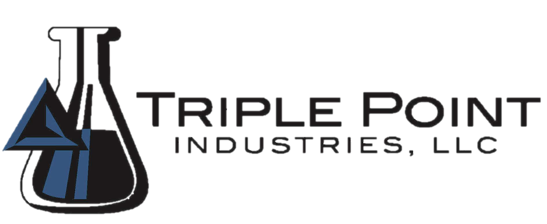
SECONDARY DISINFECTION
Secondary disinfection methods offer extended effectiveness in preserving a contaminant-free water supply following primary disinfection. By maintaining a residual disinfectant within your water system, you can effectively prevent the resurgence of microbiological growth and other waterborne pathogens. At Triple Point Industries, our team of proficient ADEM-Certified Operators is available seven days a week to conduct testing and monitoring of secondary disinfection systems, ensuring their optimal performance.
Triple Point provides tailored programs that can be optimized to the specific requirements of your system! We can assist with the installation and maintenance of a permanent disinfection system, or perform a one-time chlorination for remediation.
Secondary Disinfection methods for Legionella and pathogen control:
Copper-Silver Ionization: a water disinfection method that employs the controlled release of copper and silver ions into water systems. These ions possess antimicrobial properties that help combat and inhibit the growth of bacteria to achieve long-term prevention without creating harmful by-products or damaging plumbing equipment.
Chlorine Dioxide: Chlorine dioxide is a powerful water disinfection method that involves the use of chlorine dioxide gas or solution to eliminate a wide range of microorganisms. It is known for its effectiveness in treating various water systems and is particularly valued for its ability to form fewer harmful byproducts than some other alternatives.
Monochloramine: Monochloramine is a water disinfection method that utilizes a combination of ammonia and chlorine to create a stable, longer-lasting disinfectant. It provides sustained disinfection while producing few potentially harmful disinfection byproducts. This method is especially effective in controlling microbial growth and maintaining water quality throughout distribution systems.
Supplemental Chlorine/Hyperchlorination: Hyperchlorination is a water disinfection method that involves the temporary application of a significantly higher dose of chlorine than what is typically used for routine disinfection. This elevated chlorine concentration effectively targets and destroys a broad spectrum of pathogens and microorganisms. Hyperchlorination is often employed as an emergency response to outbreaks or cleaning of a brand-new system. The excess chlorine is flushed from the system after the disinfection time, ensuring the water returns to safe levels for consumption or other uses.
Our ADEM-certified operators are qualified to conduct a range of tests necessary for the maintenance of a secondary disinfection system, ensuring compliance with ADEM requirements. These tests may be performed on a monthly, quarterly, or annual basis, depending on system requirements and ADEM regulations.
Free & Total Chlorine Residual
Copper & Silver Residual
Lead testing
Disinfection by-products (DBP)
Bacterial Testing for E. Coli and Total Coliform
